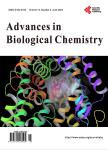Glucocorticoid-induced alterations in titin, nebulin, myosin heavy chain isoform content and viscoelastic properties of rat skeletal muscle
Glucocorticoid-induced alterations in titin, nebulin, myosin heavy chain isoform content and viscoelastic properties of rat skeletal muscle作者机构:Institute of Exercise Biology and Physiotherapy University of Tartu Tartu Estonia Institute of Mathematical Statistics University of Tartu Tartu Estonia Institute of Physics University of Tartu Tartu Estonia Institute of Sport Pedagogy and Coaching University of Tartu Tartu Estonia
出 版 物:《Advances in Biological Chemistry》 (生物化学进展(英文))
年 卷 期:2013年第3卷第1期
页 面:70-75页
学科分类:1002[医学-临床医学] 100214[医学-肿瘤学] 10[医学]
主 题:Viscoelastic Properties Skeletal Muscle Atrophy Myotonometry Cytoskeletal Proteins Glucocorticoids
摘 要:Viscoelastic properties of skeletal muscle are associated with a complex network of cytoskeletal proteins where titin and nebulin play a substantial role. The need for evaluation of muscle viscoelastic properties is widely accepted in clinical use to evaluate the effect of treatment or progression of muscle pathology (atrophy). We tested the hypothesis that the viscoelastic properties (elasticity, tone and stiffness) change in atrophied muscles with concomitant changes in cytoskeletal proteins (titin, nebulin) and contractile protein (myosin heavy chain) proportion. Sixteen 24- week-old male rats of the Wistar strain were randomly allocated to two groups: dexamethasone group treated each day for 10 consecutive days with dexamethasone in order to induce atrophy and control group. Skeletal muscle viscoelastic properties (elasticity, tone and stiffness) were determined using a myotonometer. Titin, nebulin and myosin heavy chain content were quantified using SDS-PAGE electrophoresis. We found that glucocorticoid-induced muscle atrophy is accompanied by reduced elasticity and increased tone and stiffness, with concomitant changes in titin, nebulin and myosin heavy chain con- tent. The elasticity decreased by 10.9% (P P 0.05), and stiffness was significantly lower in dexamethasone group (627.3 N/m vs 758.6 N/m);(P 0.05). Compared with the control group, the content of titin, nebulin and myosin heavy chain in atrophied muscle was 76.4%, 70.6% and 82.3%, respectively. Our results may lead to a better understanding of the mechanism of muscle atrophy and provide better guidance for rehabilitation practices and help to find rational therapeutic intervention in the future.



